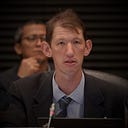Emerging markets need to be able to absorb much more climate finance than they do today
Following the COP 28 climate summit in Dubai, there will need to be a redoubled effort to drive finance in the direction of alignment with the transition. International private climate finance in particular will need to rise by 15 times from current levels. One of the major challenges in driving this growth is that it often relies on data to guide and assess whether financing flows are moving consistently with the Paris Agreement or inconsistently with these global objectives.
An article from the Transition Pathways Initiative Centre (TPI Centre) highlights some of the ways that currently available data could in some cases set expectations too high for emerging markets and developing countries (EMDCs), potentially driving financial flows away from where they are needed. Many EMDCs have low historical emissions but more emissions-intensive economies, along with “higher cost of capital and competing funding needs for economic development”.
The Paris Agreement provides ways to overcome these challenges through the concept of “common but differentiated responsibilities and respective capabilities”, which is designed to avoid overlaying global targets across diverse situations. However, the emissions data and climate pathways don’t always cooperate and provide support to the same level of context-specific differentiated responsibilities because of limited regional-specific data and pathways for sectoral decarbonization.
The challenge comes from too much focus on portfolio decarbonization at the expense of real economy decarbonization (‘paper decarbonization’): “With a lack of regional nuance in typical climate assessments, investors may decide to withdraw from high-emitting EMDCs in order to decarbonize their investment portfolios. This is a problem as it could constrain the financial flows needed for the low-carbon transition.”
The TPI Centre points to ways that investors can improve their evaluations about how they direct finance for climate transition to EMDCs, on the supply side of climate finance. There is a similar effort needed on the demand side from EMDC-based financial institutions, who are critical parts of providing the absorptive capacity of the dramatic increase in finance that is needed.
One of the constraints facing financial institutions in EMDCs is that due to the investor-oriented approaches of sectoral decarbonization pathways, banks split their portfolios into low- and high-emitting sectors and place their efforts solely on increasing the amount of financing they can claim to be directing towards transition of high-emitting sectors.

This is undoubtedly important, and the volume of financial flows is insufficient for high-emitting sectors to finance their transition towards Net Zero alignment over time. But it ignores the effect of this approach in diluting the volume of finance available due to the limit that financial institutions have on their sectoral or counterparty concentrations.
To take an example, consider a financial institution that selects the electricity sector as the most important investment in transition. It may decide to shift one-quarter of all its electricity financing towards renewables and begin supporting transition finance with the remainder.
That would shift all the electricity sector financing towards a Net Zero alignment, but for most banks that would still mean a single-digit percentage of their financing assets is directed to financing the energy transition and not the full court press that is needed. With transition finance guidelines remaining controversial, even for a bank where 10% of its loans go to the electricity sector, the amount of financing available for refinancing through a green bond or green sukuk to mobilize international private climate finance would be just 2.5% of the bank’s total assets.
Sectoral decarbonization is important in providing one view of the actions needed to achieve a climate transition, but if it is not mobilizing as much finance as needed, then other data can help. This is particularly so in EMDCs where data at the country-level or lower is much less accessible to shine a light on other opportunities where international private climate finance can go.
This is one of the ways that RFI’s financed emissions database (open-access here) can provide another perspective. Its focus is on domestic financial assets in 11 OIC countries, most of which are classified as EMDCs, and provides some insight into value chain emissions linked to higher-emitting sectors such as electricity, transportation and waste management.
By using this as one complementary resource along with sectoral decarbonization pathways and bottom-up reported data from clients and counterparties, financial institutions in EMDC markets including those across the OIC can work to improve their value proposition as domestic intermediators of international climate finance in order to help finance for the transition reach all the places where it can make an impact.
Want to learn more about responsible finance in OIC markets & Islamic finance? Subscribe to RFI’s free email newsletter today!
